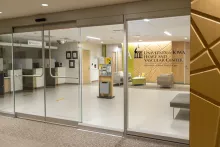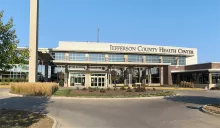Atherosclerosis
- For all other requests:
- 1-800-777-8442
Symptoms can include chest or leg pain and often don’t show up until an artery is clogged with large amounts of plaque. When blood has a hard time moving through a clogged artery, you have a much higher risk of heart attack, aneurysm, or stroke.
The vascular specialists at the University of Iowa Heart and Vascular Center are skilled at finding atherosclerosis throughout the body. We offer all of the latest treatments to reduce or reverse symptoms and treat serious complications.
Atherosclerosis symptoms
When atherosclerosis affects certain arteries, it’s often given a name that describes those arteries. Symptoms vary, depending on which arteries are clogged.
Some of the most common examples include:
Carotid artery stenosis symptoms
The carotid arteries are large blood vessels that carry blood from your heart to your brain. When plaque build-up narrows these arteries, you have a condition called carotid artery stenosis.
Symptoms usually don’t show up until blood flow to your brain is greatly reduced or even blocked. This can result in a stroke or stroke-like symptoms that come and go.
Call 911 if you have any of these symptoms:
- Numbness, weakness, or paralysis in an arm, a leg, or your face (especially if they all happen on one side of the body)
- Trouble speaking or slurred speech
- Confusion, including problems understanding speech
- Trouble seeing in one or both eyes, including blurred or double vision
- Loss of balance or coordination, including trouble walking
Coronary artery disease symptoms
The coronary arteries are blood vessels that wrap around the outside of your heart. When they’re harmed by atherosclerosis, your heart muscle is deprived of blood and oxygen. This is known as coronary artery disease (CAD).
Symptoms include:
- Chest pain
- Dizziness or lightheadedness
- Shortness of breath
Peripheral vascular disease symptoms
The peripheral arteries include the main blood vessels that carry blood from your heart to your arms and legs. When atherosclerosis affects these arteries, it’s known as peripheral vascular disease (PVD).
Because PVD is much more common in the legs, you’ll most likely have one or more of these symptoms:
- Claudication (leg pain that occurs with exercise)
- Coldness in the lower leg or foot, especially on one side
- Ischemic ulcers (open sores on the legs or feet)
- Leg numbness or weakness
Atherosclerosis can also harm other arteries in your body. These include the aorta, which is a large blood vessel that runs from your heart to your pelvis, and the renal arteries, which are blood vessels that supply your kidneys.
Diagnosing atherosclerosis
If your symptoms appear to be caused by atherosclerosis, you should ask for a referral to a cardiologist or vascular disease specialist.
Without proper diagnosis and treatment, atherosclerosis can cause serious or life-threatening complications. These include:
- Abdominal aortic aneurysm (a rupture in the section of aorta that runs through your abdomen)
- Gangrene (tissue death), leading to limb amputation
- Heart attack
- Heart failure
- Kidney failure
- Stroke
The University of Iowa Heart and Vascular Center offers all the tests you need to identify atherosclerosis and rule out other problems that can cause similar symptoms. These tests include angiograms, echocardiograms, stress tests, and vascular ultrasounds.
Atherosclerosis treatment
The treatment you’ll need for atherosclerosis will depend on several factors. These include which arteries are affected, the severity of plaque build-up within those arteries, and the severity of your symptoms.
Nonsurgical atherosclerosis treatments
If you have mild atherosclerosis, nonsurgical treatments may improve your symptoms and prevent further plaque build-up. These treatments include:
- Lifestyle changes: You can significantly improve your heart or vascular health and prevent atherosclerosis from getting worse by making certain lifestyle changes. These include exercising, losing weight, quitting smoking, and getting Type 2 diabetes under control.
- Lipid monitoring: If you have hard-to-treat cholesterol or a genetic disorder called familial hypercholesterolemia, we have experts to help you manage it.
- Cardiac rehab: Our medically supervised cardiac rehab program helps people with CAD, PVD, and other problems caused by atherosclerosis. It includes a 12-week, customized exercise plan designed to strengthen your heart or improve symptoms like leg pain.
- Medication: Certain prescription medicines can help you lower your blood pressure or cholesterol. Others help prevent chest pain, plaque build-up, or blood clots.
Minimally invasive procedures
If one of your arteries is partially or fully blocked and your symptoms make it hard to get through the day, you may need more advanced treatment.
UI Heart and Vascular Center interventional cardiologists and vascular surgeons offer minimally invasive procedures to treat clogged arteries throughout the body. Compared to traditional surgery, these procedures may help you recover more quickly and with less pain. They include:
- Angioplasty: We guide a flexible, hollow tube called a catheter into the problem artery and then inflate a special balloon. The balloon flattens any plaque and widens the artery so blood can flow through more easily.
- Atherectomy: We use a catheter fitted with a tiny rotating blade or laser to get rid of thickened plaque inside the artery.
- Stent placement: We use a catheter to insert a tiny mesh tube called a stent inside a narrowed artery. Once the stent is in place, it keeps the artery propped open. Stent placement is often performed along with an angioplasty.
Surgical treatments
If you have severe atherosclerosis that can’t be fixed with minimally invasive treatments, your doctor may recommend surgery.
Even though any type of surgery has risks, it’s often the best option for younger, healthy patients with atherosclerosis. That’s because certain procedures have better long-term durability when performed using traditional, open techniques.
We offer:
- Endarterectomy: We make an incision in the part of the body containing the clogged artery. Then we open the artery and remove the plaque that’s built up inside. When we use this procedure to treat carotid artery stenosis, it’s often referred to as a carotid endarterectomy.
- Vascular bypass surgery. We take a healthy blood vessel from another part of your body, or we create a new vessel with synthetic material, and we attach both ends to the problem artery. This allows blood to bypass the blockage. When we use this procedure to treat CAD, it’s known as coronary artery bypass grafting (CABG).
Our heart surgeons and vascular surgeons perform hundreds of these procedures each year.
Our Care Team
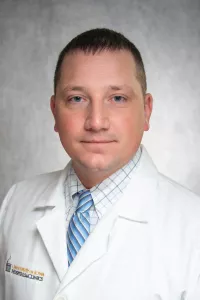
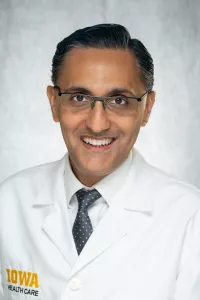
- Heart and Vascular
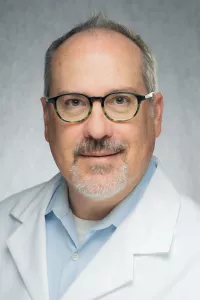
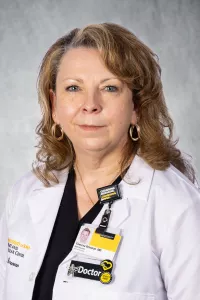


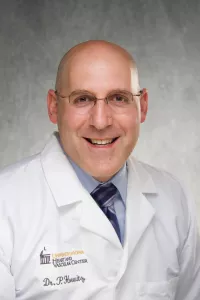

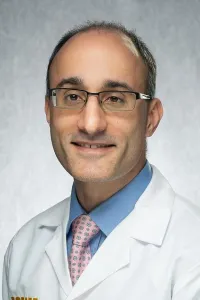
- Heart and Vascular
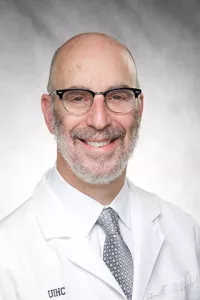
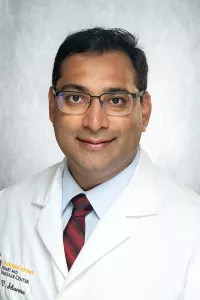
- Heart and Vascular




- Heart and Vascular
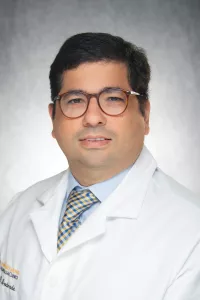
- Cancer
- Radiology
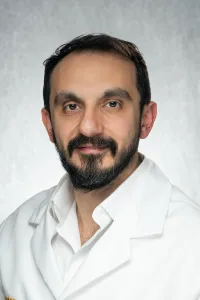

Not sure which Atherosclerosis provider is right for you?
Locations and Offices
